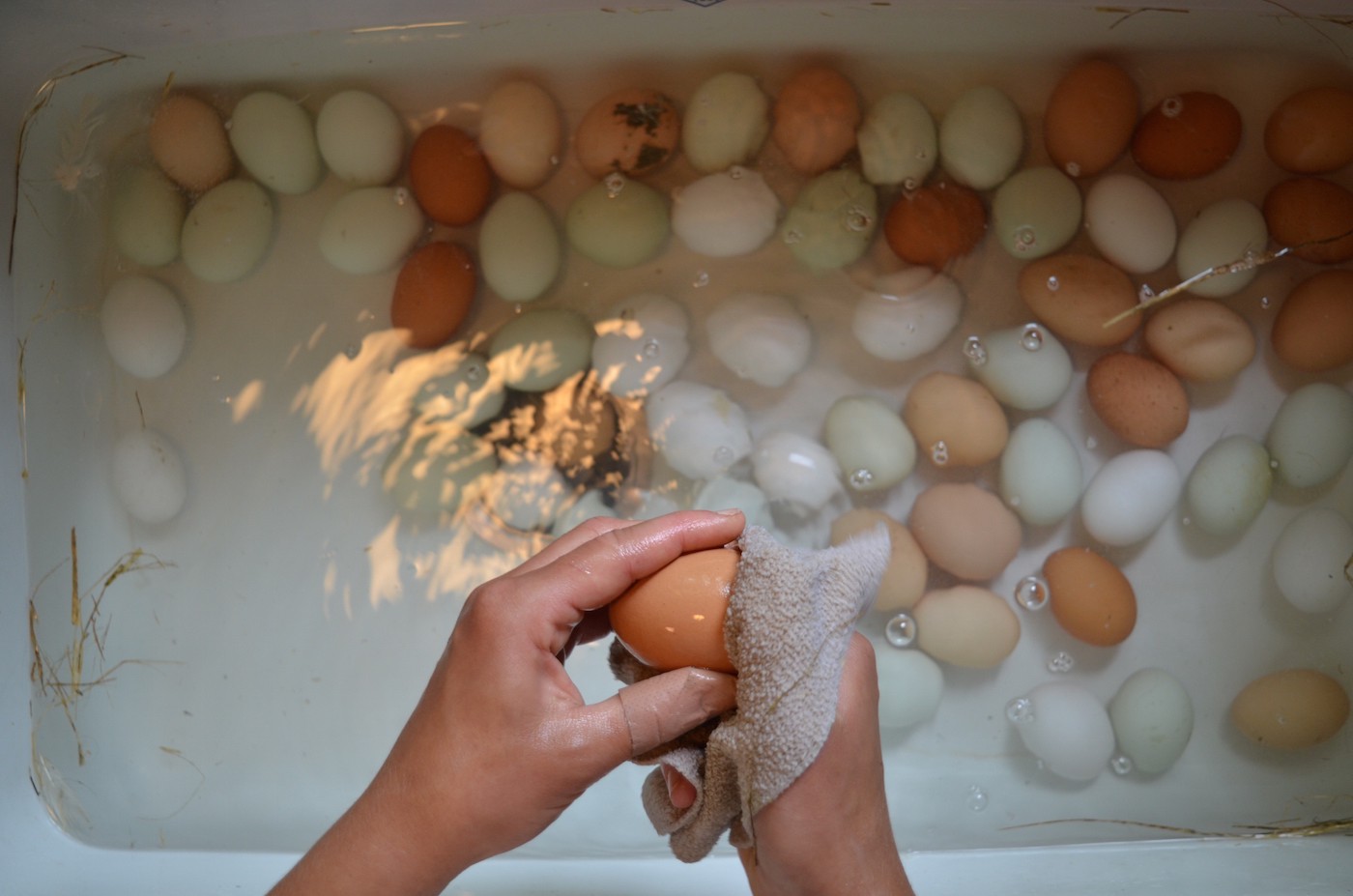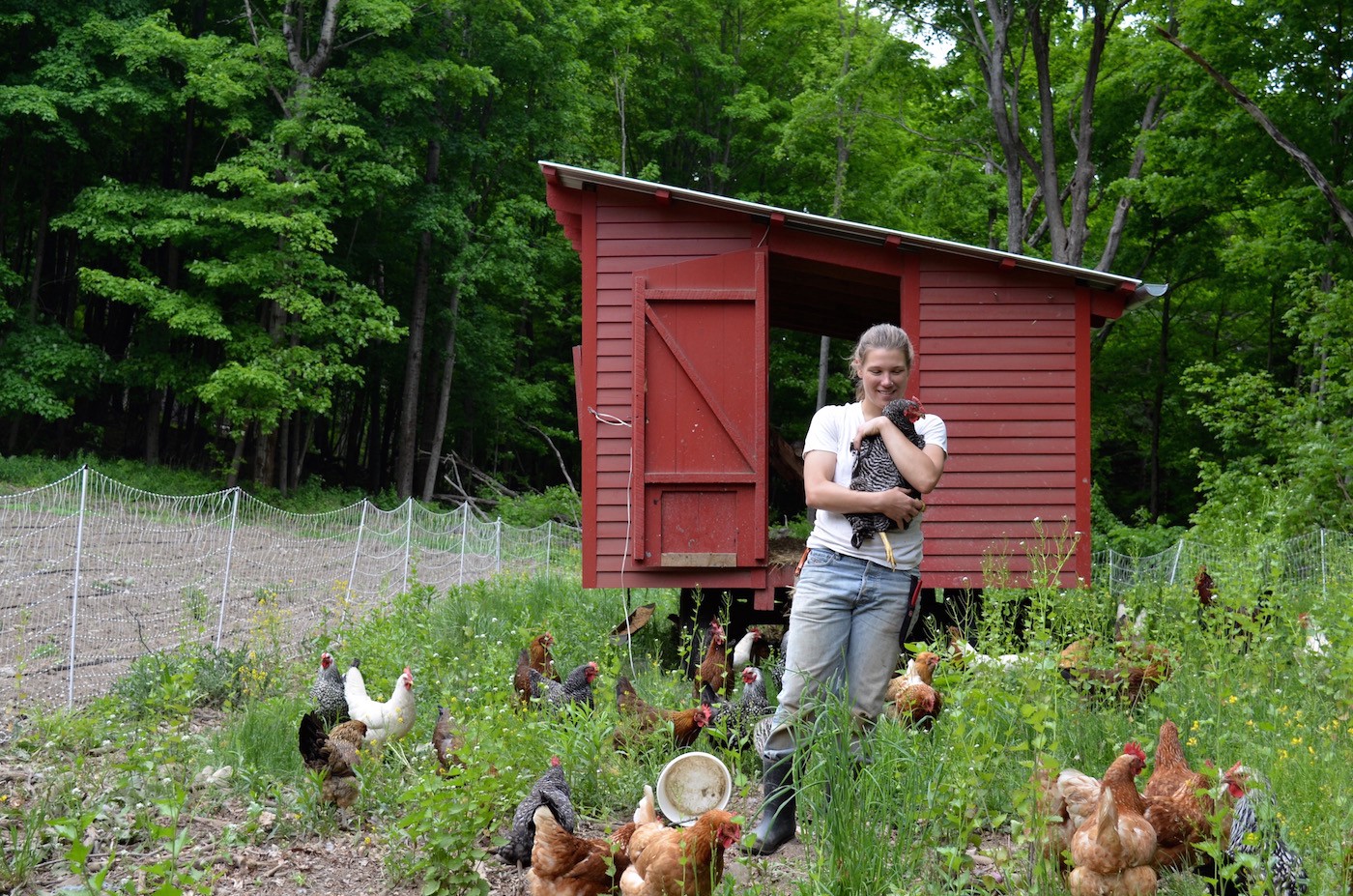A Case for the $8 Egg Carton
by Keith Flanagan

It’s not typical that I find myself out of bed before 10 a.m. on a weekend, let alone at 7 a.m., wrist-deep in a bed of chives. The odds are even less likely (per capita) that a farmer in her mid-twenties would be at my side.
The scene I’m describing is set 140 miles from my Brooklyn hovel on a small-scale farm in Canaan, New York, where I spent a recent weekend learning the basics of sustainable agriculture. Wedged between the Berkshires and the Hudson Valley, this farm is owned and operated by Foragers Market, a modestly sized operation with two locations in New York City. The company started their farm in 2009, fastidiously working towards sourcing produce, eggs and flowers for its retail locations.
I found myself in the aforementioned chives alongside Jillian Jason, both a 26-year-old full-time farm manager and a clear outlier within the USDA’s latest census (today’s average farmer is an aging male in his 50s). Each day, before and after she navigates the fields, Jillian serves as caretaker to the farm’s 75 laying hens and three roosters, opening the doors to their cozy coop so they can roam freely on a plot of land that Manhattanites would liken to the dreamiest of upstate estates. The hens serve their purpose happily, producing a natural flow of eggs that Jillian gathers, washes by hand and packs in square boxes before sending them off to the city with the farm’s latest provender.
Once the eggs hit Foragers Markets’ shelves, they’re sold by the dozen for $8, an ostensibly steeply priced product that one might mistakenly designate as the East Coast equivalent to $4 toast. So what makes these particular eggs, hued in blues, browns and yellows, so golden?
While nothing new, the farm hits every mark that the Humane Society might sanction. Breathing room, for one, sweetens the deal for this lucky flock. While conventional efficiency farms offer about 67 square inches (less than a standard sheet of paper), the hens roam freely amongst their 30,000 square feet of verdant greens. Furthering their cushy life, the hens eat local, enjoying a healthy feed made just across the Massachusetts border, ensuring delicious eggs from healthy chickens.
But surely cage-free and well-fed poultry are already on your radar, and not just those of you in California. The reason these higher quality, higher priced eggs exist, however, falls on the consumer; 54% of consumers are looking for sustainable purchases, according to a report by Deloitte. As a whole, we’ve started to expect that our food is produced on ethically inclined farms, most of which are small, falling within reach of local origins and managed by sustainability-conscious individuals.

What that means in practice is laborious. Measuring the efforts of our Saturday morning alone, I accompanied Jillian after waking up at 6 a.m. to release and feed the cooped chickens. Next on the list was a brief harvest of chives, sage, thyme, kale florets, and wild-grown products from which Foragers takes its name. On this particular day we foraged for sweet sicily, stinging nettles, and wild garlic mustard. We then moved on to heavier lifting; we relocated a series of miscellaneous equipment from one side of the property to the other, laid eleven drip irrigation lines for the season’s upcoming watermelons, and watered rows upon rows of tomato sprouts. It was a full day, and we hadn’t even made it to lunch.
Surely Jillian, and the many like-minded farmers sharing her trajectory, are worth their weight in golden eggs.
Not so. The egg, much regarded as a kitchen staple, exists in an industry that struggles to even afford to pay itself; 75% of farms sell less than $50,000 in agricultural products and a majority of farmers are taking on additional work in order to supplement their income.
As much agricultural know-how as I learned from my weekend in Jillian’s shoes, it was also a reminder that our shoes share the same basic expenses. She too, is responsible for monthly rent, car and health insurance, mobile phone and Wi-Fi bills (even more so in a modernized farm industry). Although we understand average costs of living, we rarely see the high-price of heirloom work reflected on our price tags. Suddenly $8 for a dozen eggs, which I’d washed by hand, almost seems too low.
It was much to my chagrin, then, to discover that the average price of a dozen eggs is actually closer to $2.06. Less than twenty cents for an individual egg? Have we truly undervalued our food so efficiently, that by comparison to an ethically produced egg, we’re undercutting the fruits of our own labor, a basis of our survival, by 286.92 percent?
Maybe I’m blowing smoke. Maybe after spending a weekend on a lovely property with an earnest group of kindhearted people, I drank the organic juice.
But now that I’ve indulged, how can I pay anything less than $8 for a dozen eggs?
This story is part of our food month series.
Keith’s main priorities include eating, writing, and eating. It’s no surprise that he loves sandwiches. He lives in Brooklyn, New York.
Support The Billfold
The Billfold continues to exist thanks to support from our readers. Help us continue to do our work by making a monthly pledge on Patreon or a one-time-only contribution through PayPal.
Comments